| | |
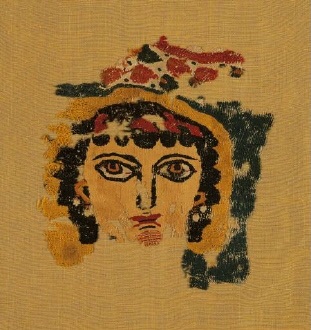 | Fragment of Coptic woollen tapestry, probably a screen curtain, with the expressionistic head of a female figure, perhaps the personification of Spring. 3rd-4th c. 0.20x0.19 m. (ΓΕ 7177)Fragment of a linen tunic band, decorated with a grid pattern of lozenges and medallions with symmetrical motifs. From Egypt, 8th-9th c. 0.95x0.26 m. (ΓΕ 7173) Benaki Museum, Athens |
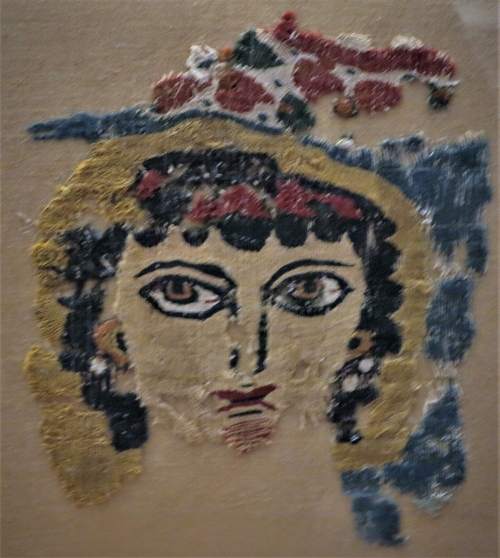 | |
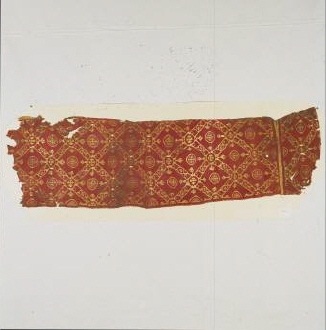 | Fragment of a linen tunic band, decorated with a grid pattern of lozenges and medallions with symmetrical motifs. From Egypt, 8th-9th c. 0.95x0.26 m. (ΓΕ 7173) Benaki Museum |
 | |
 | Coptic embroidered roundel with an extraordinarily expressive bust of the Apostle Mark, who evangelised Egypt. 6th c. Diam. 0.09 m. (ΓΕ 6991) |
 | Embroidered representation of an archangel, a rare example of Coptic weaving. 6th c. 0.15x0.16 m. (ΓΕ 6988) |
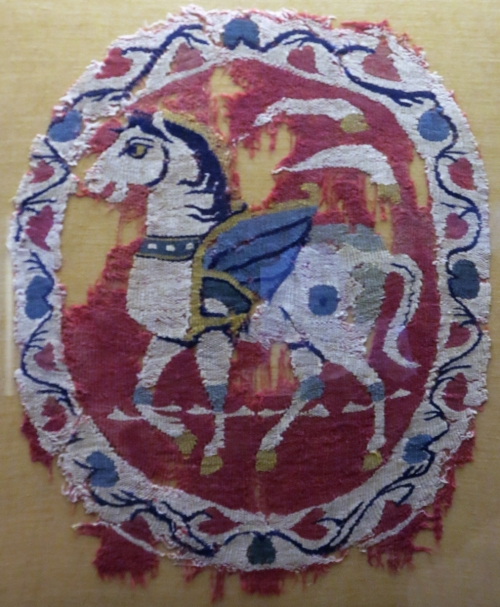
| 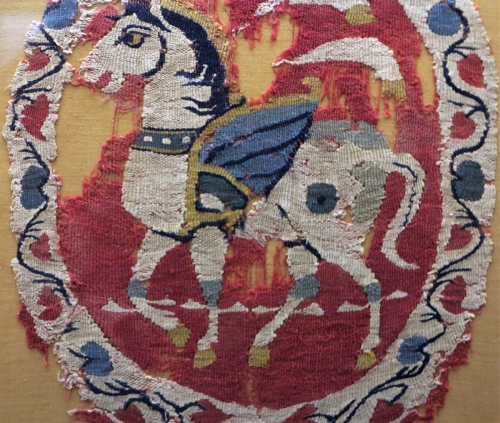 |
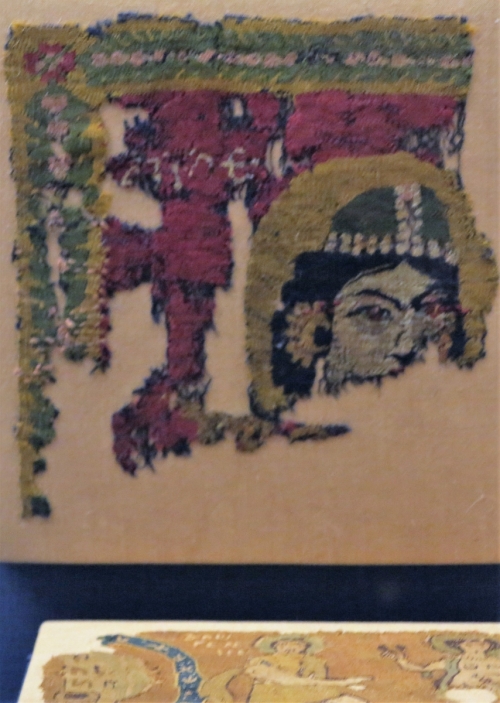 | |
 | Embroidered liturgical stole showing a warrior saint and a seraph, unique among surviving Coptic fabrics. 6th-7th c. H. 0.41 m. (ΓΕ 6989) |
 | 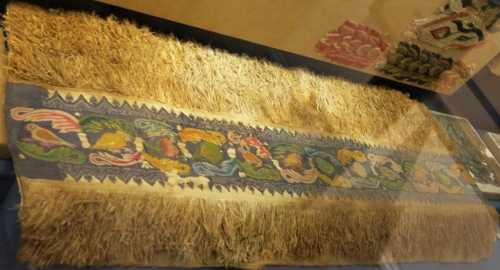 |
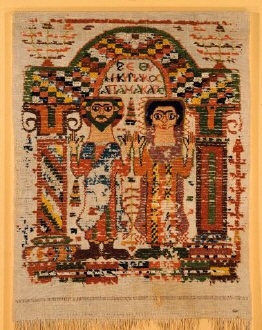 | Linen and woollen screen curtain (velum) in the loop-weave technique, with a representation of a couple praying beneath an apse and a Coptic inscription written in Greek script. It comes from a monastery at Antinoe in Egypt and dates to the 5th-6th c. 1.05x0.86 m. (ΓΕ 7145) |
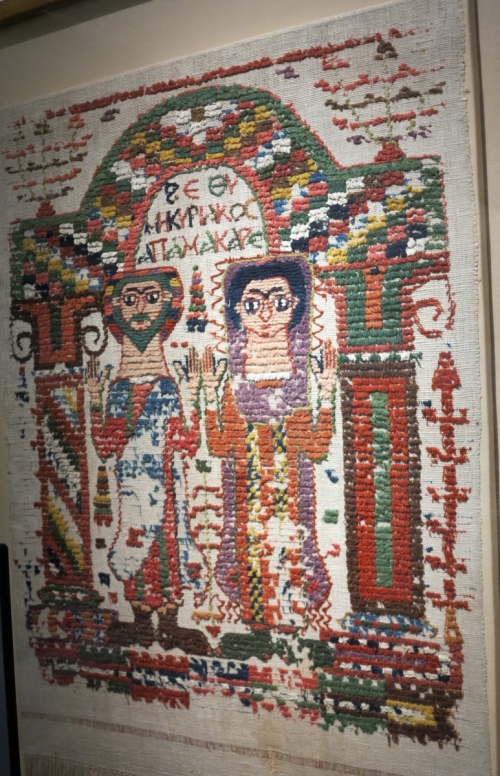 | |
 | Coptic textile with a unique embroidered representation of the Crucifixion and the twelve Apostles. The expressionistic character of the depiction possesses the emotive strength of a child’s drawing. The distinctive rhythmical design of the composition and the rendering of Judas isolated in the right-hand border are of particular interest. 13th c. 0.48x2.63 m. (ΓΕ 7148) |
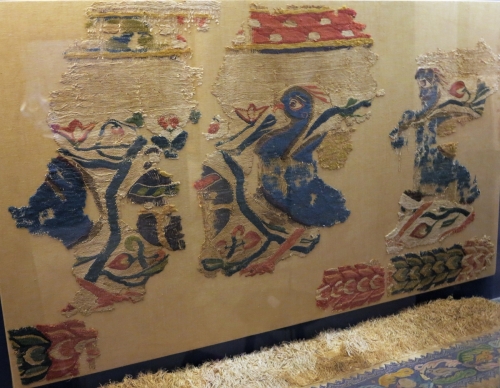 | |
 | Tapestry tabula of linen and wool with the representation of a woman adorning herself in front of a mirror. These decorative textiles were sewn onto garments. 5th-6th c. 0.37x0.37 m. (ΓΕ 7111) |
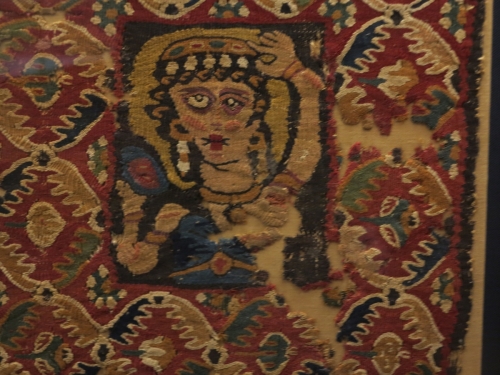 | |
 | Excellently preserved Coptic linen textile for decorative use, with an enigmatic female bust in the rectangular central panel. 6th c. 0.13x0.11 m. (ΓΕ 7110) |
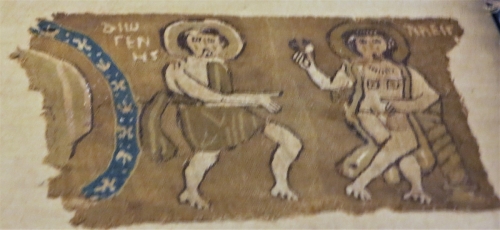 | |
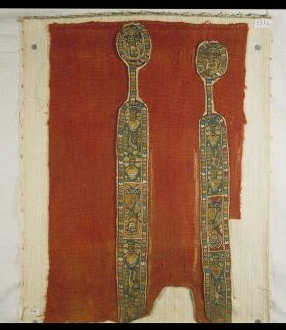 | Part of a Coptic woollen tunic with sewn tapestry bands. 8th c. 0.54x0.35 m. (ΓΕ 7163) |
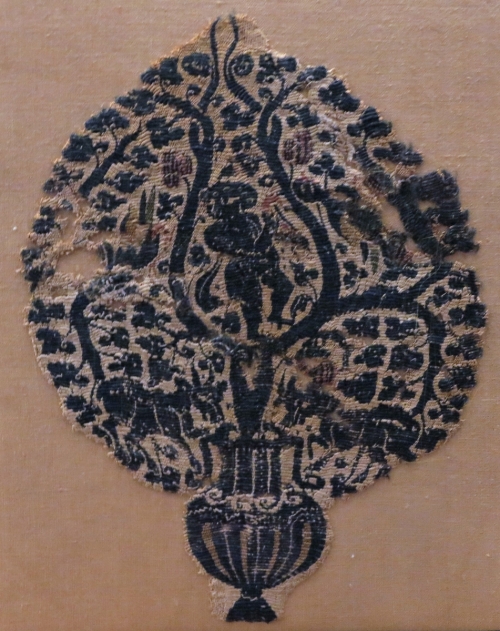 | |
 | Coptic tapestry with scenes drawn from the mythological exploits of Herakles. The central roundel portrays the well-known tale of the theft of the girdle of Hippolyte, Queen of the Amazons. Around this are episodes from the tale of Deianeira and Herakles’ final confrontation with the centaur Nessos. The rendering of these various scenes illustrates the persistence of the repertoire of classical antiquity. 6th c. 0.17x0.17 m. (ΓΕ 7035) |
| | |
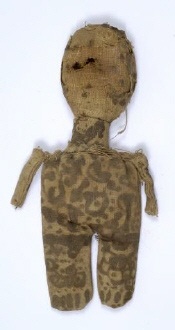 | Coptic cloth doll, similar to those found elsewhere before the mass production of children’s toys. H. 0.16 m. (ΓΕ 16547) |
| | |
 | Woollen wall hanging portraying a musician with a string instrument. Wall hangings were used to embelish home interiors. Egypt, 8th-9th c. H. 0.74 m. (ΓΕ 8496) |
































